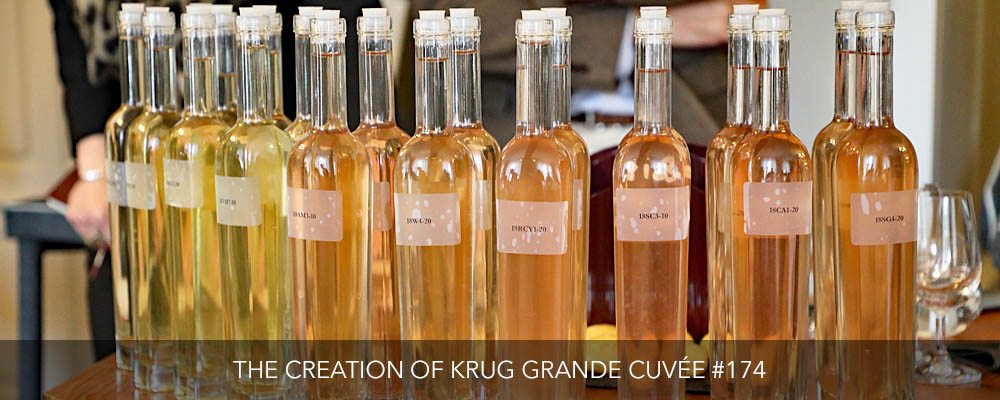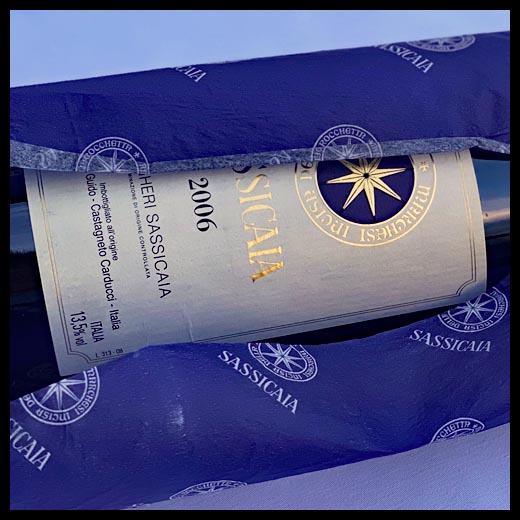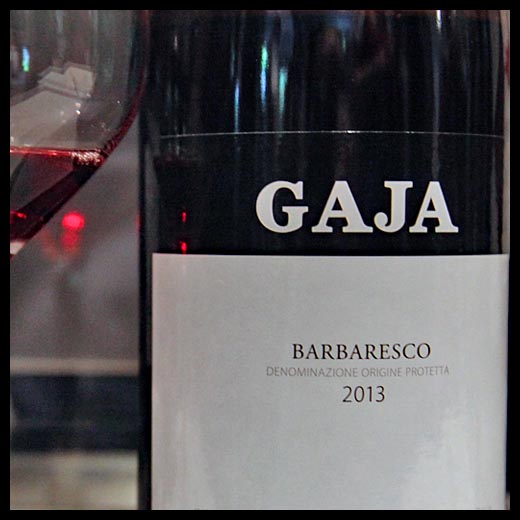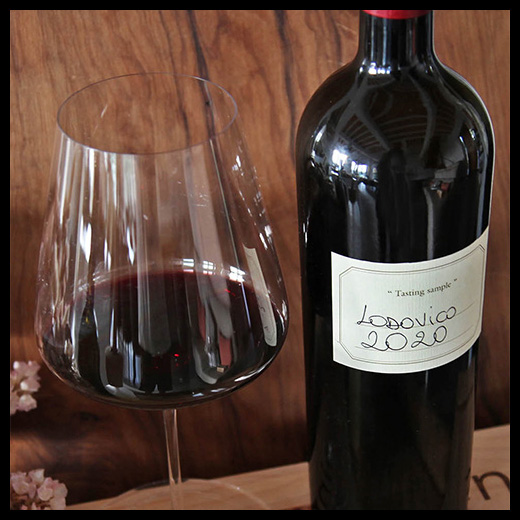Behind the scenes at KRUG
07. Mai 2019La Maison Krug
Of all the bubbles I've tasted, there's nothing like a glass of Krug. Some are crisp and fresh like Dom Ruinart, others are salty and creamy like Dom Pérignon, some might smell like a garden of roses like Veuve Clicquot Cave Privée, but not a single wine has the aura and depth of champagne made by Krug. The bottle itself is shaped more like an award rather than a champagne bottle, it's aerial design is as classic as it can be and if it comes in a wooden case made from cherry trees, you know the occasion to open such a bottle must be special. People save their best bottle of Krug for their childrens weddings or millennial birthdays – if they ever have the chance to buy one. Krugs best quality grapes Clos de Mesnil with bottles so rare it's almost impossible to own let alone try one. Given this you might imagine the excitement level I am facing, sitting on a plane to Paris in order to visit the one and only maison of Krug.
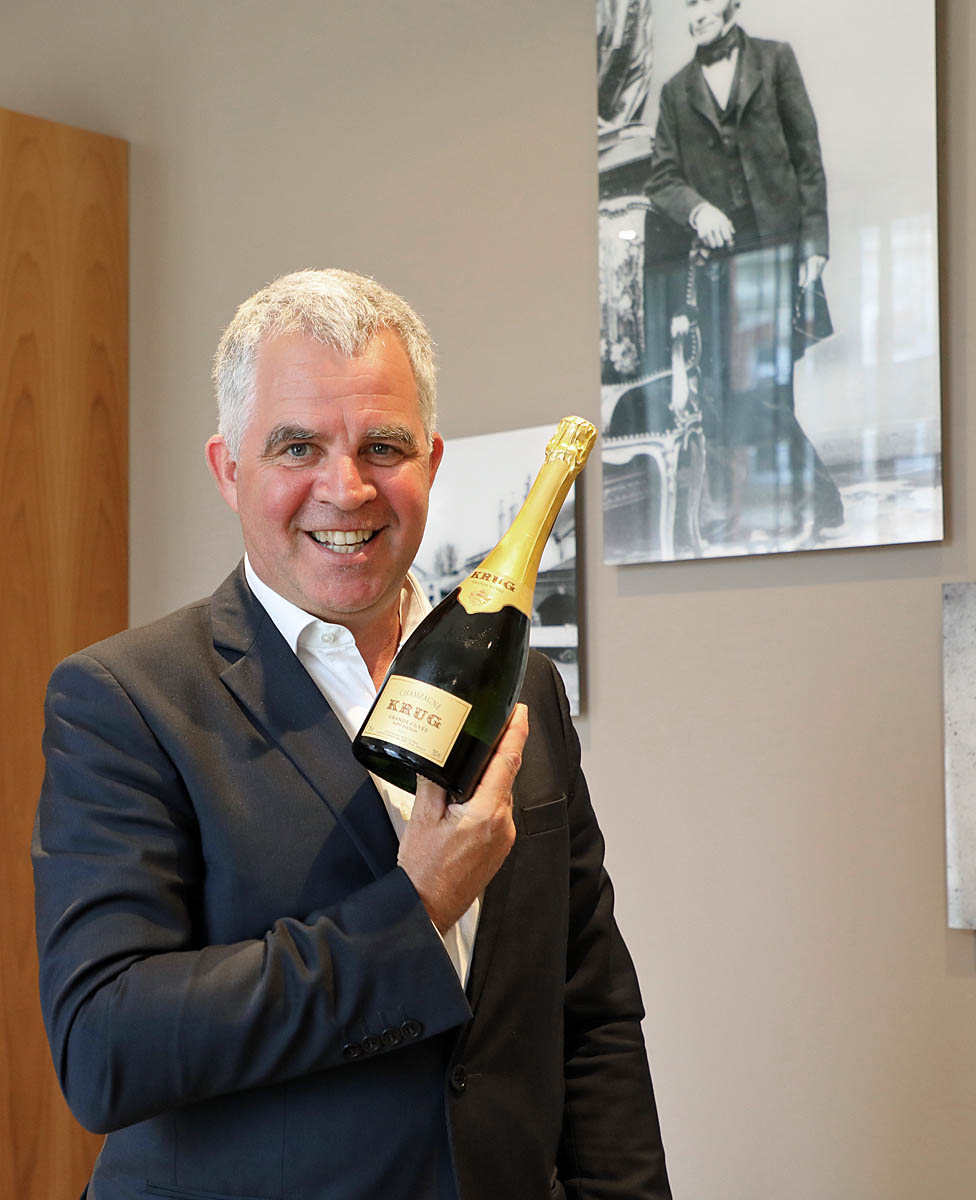
Olivier Krug still representing the family tradition of the Maison Krug.
The champagne house was bought by the luxury conglomerate LVMH a generation ago, but Olivier Krug himself is still the face behind the brand. As seen on Instagram, he's traveling the world showcasing his champagnes from Tokyo to New York. In times of social media it has become more relevant than ever to address customers through their phone, and fans of the champagne seem to be of all nationalities and ages.
Clos du Mesnil Champagne 2004
It seems as if the sky knew that we were coming, because every time I'm in the lovely champagne region, I see nothing but grey skies and big drops of rain. I am spending my life in the muddy vineyards in the pouring rain, said one of the around twenty journalists that had the honor of being invited to the Krug Encounters trip to Reims. We broke out in laughter in the minivan, because it was our thought exactly. We had just started the day with a bottle of Clos du Mesnil Champagne 2004 and it was served in the middle of its prestigious vineyards, that are surrounded with high walls made of brick and are normally impossible to trespass (we later learn that those walls reflect warmth and the large trees contribute shade). Not a thunderstorm nor the ending of the world could have overshadowed the aromas of this wine, it was truly one of those wine moments, that made me remember why I became a journalist in the first place. Needless to explain to our readers who are without exception wine lovers and connaisseurs, we are always looking for this one moment, where wine gives us goosebumps and the rest of the worlds seems to stand still. Being a true champagne enthusiast, this bottle gave me all the feels.
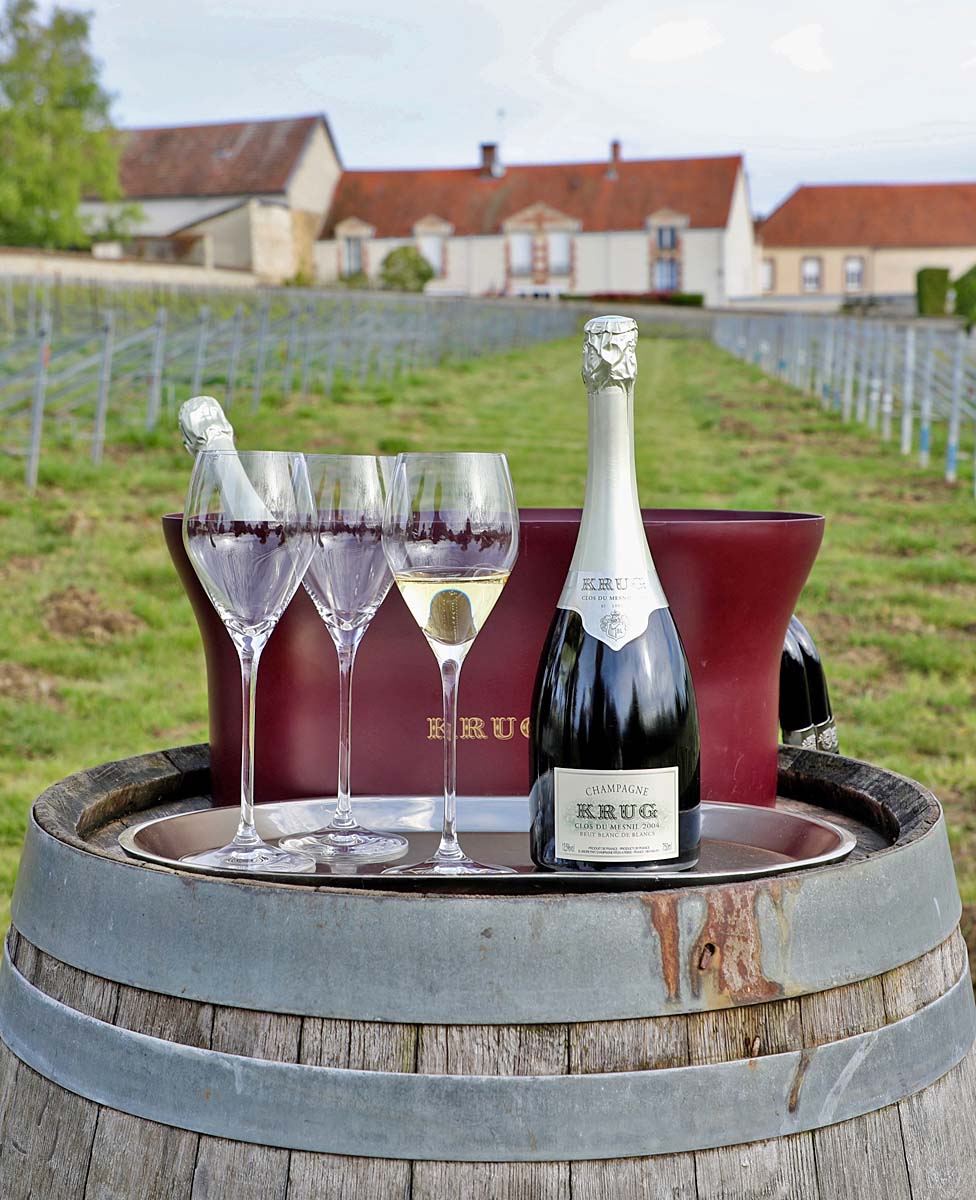
A truly memorable moment: drinking Clos du Mesnil 2004 in the vineyard.
Since I am writing about the experience, publishing pictures, blogging on Instagram and taking the tasting notes myself, I am always fully equipped looking like a park ranger with my heavy camera, iPhone, notebooks, laptop and rain coat. The guests were pretty much the elite of wine journalists that had flewn in from all around the globe just for this tasting, so explanations on where we were and what we were drinking were simply skipped. I was so stressed from taking pictures, notes and videos to capture the first impressions, that I had realized only after the first sip what was going on around me. I unintentionally blind-tasted the Clos du Mesnil and thought to myself what on earth could I be drinking that was so fine, precise in aromas with notes of apricot and mirabelle, an acidity so high, the bubbles felt crystal clear. Hard to top such an opening, even before the event officially started, I was over the moon with this champagne.
Olivier Krug welcomed us with a little speech, explaining that his grandfather wrote in his diary in 1884, that he wanted to create a champagne, that did not exist at the time. It was his aim to express the individuality of the plot, while neither being a vintage nor a non-vintage and showing the fullest music of champagne. His father and grandfather bought the Clos du Mesnil plot without the ambition of producing a Clos de Mesnil as we know it today, they simply saw great potential in the terroir.
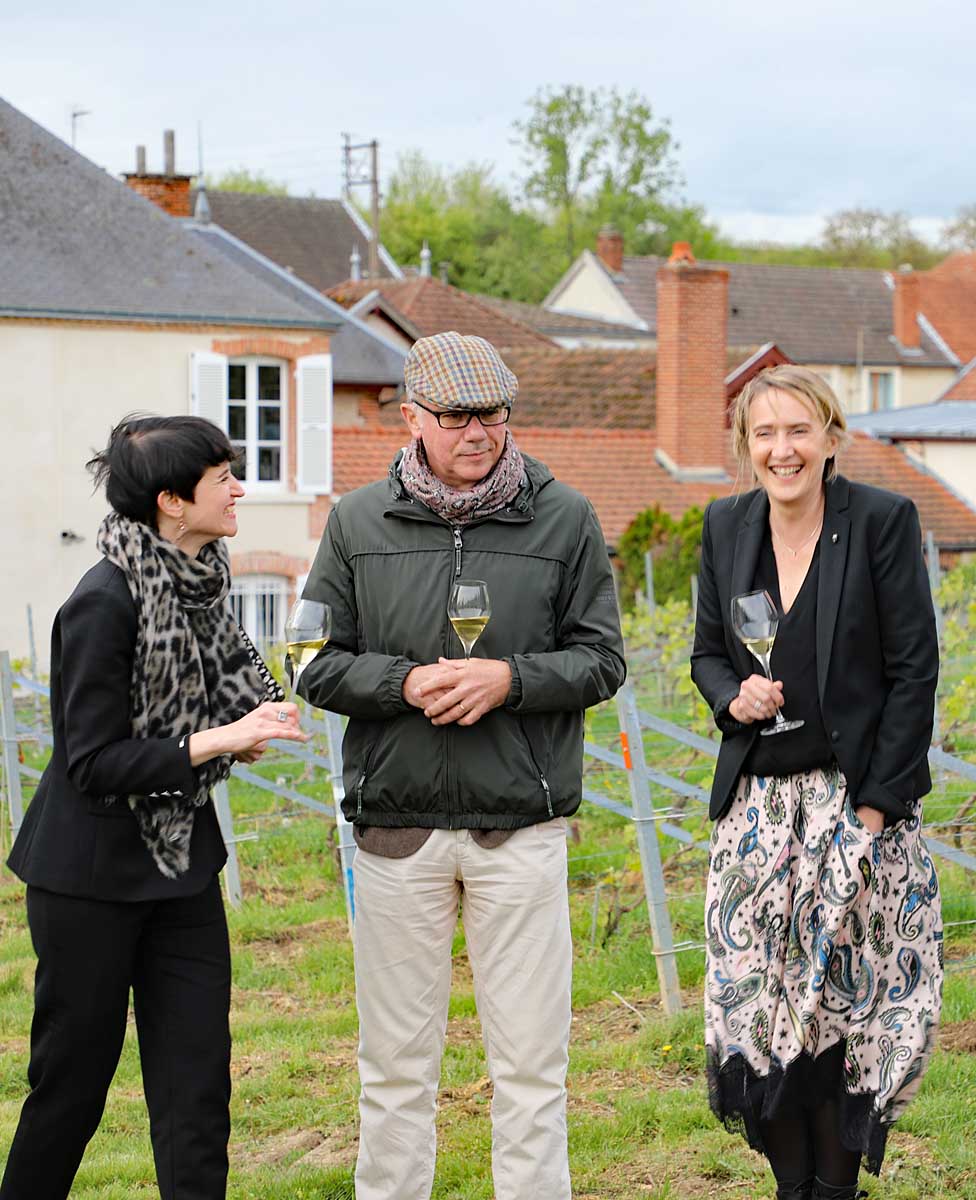
Chef de Caves of Krug Eric Label with his team in the Clos du Mesnil vineyard.
He hands the microphone to Eric Label, who has been Chef de Caves of Krug for twenty years and knows all of the six micro plots at Clos de Mesnil like the back of his hand. The entire wine making team spent the day with us, and I especially loved the diversity of the team. Those four women and two men are the driving force behind the fabulous taste of the wine, and as taste differs with age, so does the team. Everyone seems extremely committed and Olivier Krug remains silent during the technical part of the upcoming presentation. He says himself that he is “in for the fun†while taking pictures for the next Instagram upload. It's his job to be the face and ambassador of the brand, and of everything I can see, he's made for the job.
Creation of KRUG Grande Cuvée 174th Edition
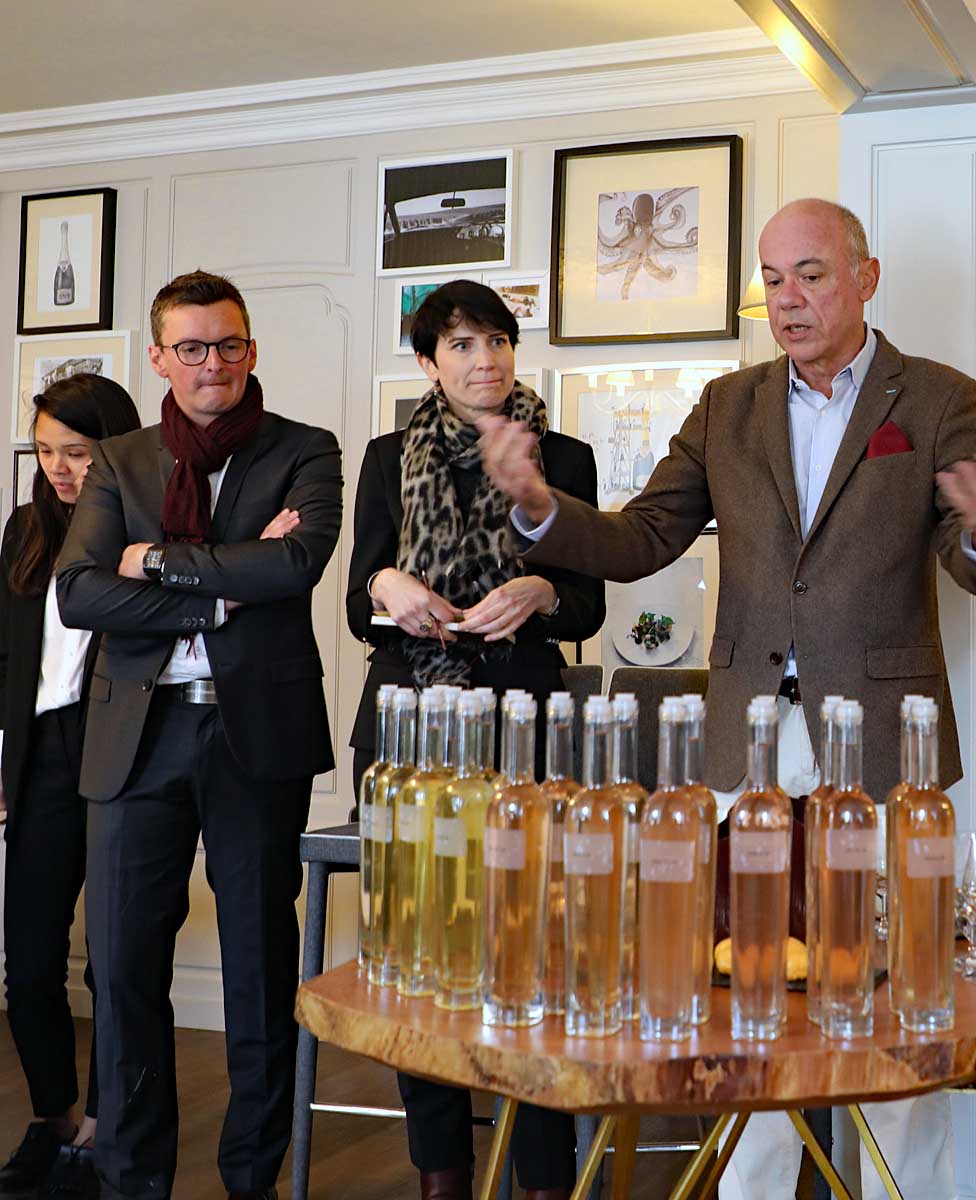
Eric Label with his team explaining the base wines of the KRUG Grande Cuvée 174th Edition.
We are invited to taste a few dozen of the base wines of 2018 and it becomes inevitable to notice the difficulty of the wine making process. The vintage 2018 began with a rather early harvest after a year that was even warmer than 2003. They started harvesting on August 23rd, always on the hunt for extreme freshness. The first wines we are tasting are the Chardonnay base wines, and they are as different as they could be. Both Chardonnay and Pinot Noir wines show overwhelming acidity and the Krug team is visibly pleased. Apparently this is exactly what a wine needs in order to become a great champagne one day. When tasting the Pinot Meunier grapes (that are always delayed by nature) we are asking ourselves why this grape isn't famous for the champagne region, since it's much more drinkable and accessible. However, we are taught to forget everything we've ever heard about winemaking when visiting Krug and that Pinot Meunier can indeed be in a Grande Vin. The vulnerability of the Pinot Meunier grape leads straight to a discussion about the effects of climate change and in fact the Krug team has a positive attitude towards it, since it helps the maturity of the grapes. The champagne region has an average temperature of 10 degrees Celsius only (again, I can reaffirm) and every ray of sunshine is highly appreciated.
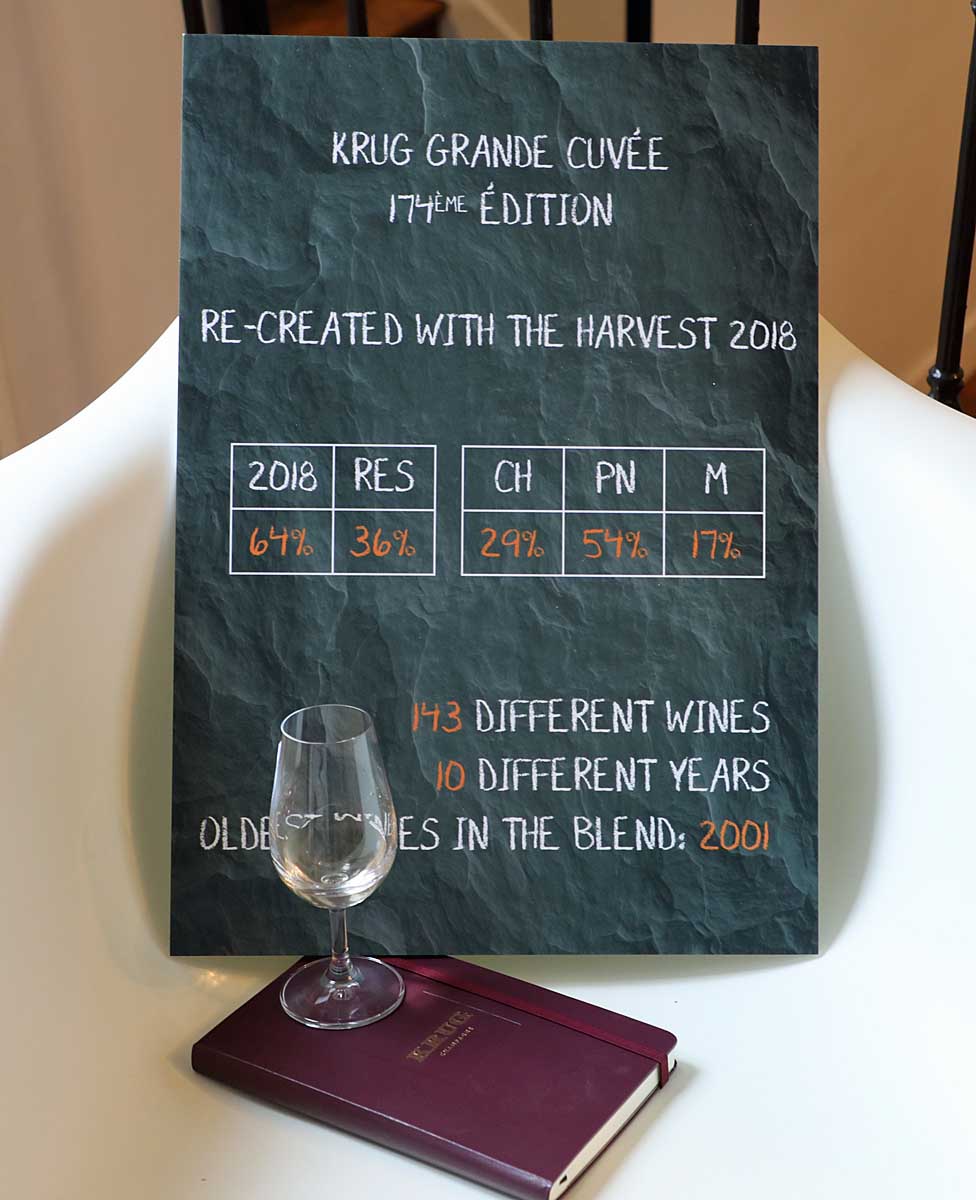
The final blend of Krug Grande Cuvée 174th Edition.
It's a wonderful idea to now serve a few reserve wines to identify the changes the wine has made and indeed, the flavors, freshness and structure are still intact while the piercing acidity disappears slowly. Just two pieces of insider information: the Pinot Noir form 2017 shows aromas of caramel which is typical for the malolactic fermentation and the Pinot Noir from Ambonnay vintage 2013 clearly resembles a Riesling wine. At the end of this session we are tasting the final blend of the 174thedition, which will be released in 2026. To understand the concept of the Krug Grand Cuvée Éditions you must know that the champagne contains around 50-60% wine of the current vintage and is blended with up to 150 reserve wines from the past 15 years. The 174th edition is still very concentrated on acidity and I find it highly interesting yet difficult to imagine the outcome in seven years. We are also proudly presented the so-called Black Book, which contains thousands of tasting notes, digitalized in charts and graphs.
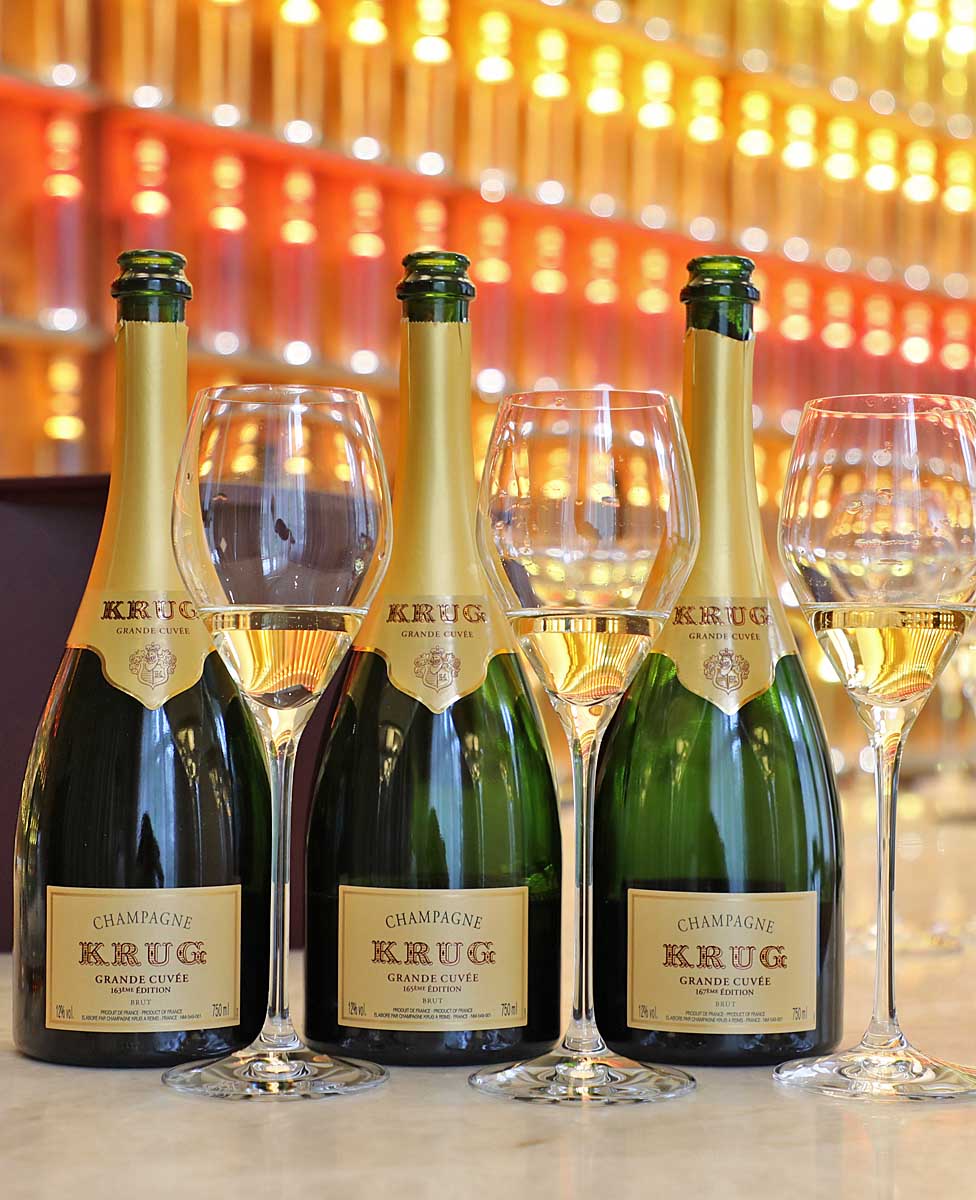
Krug Grande Cuvée Editions 163 (2007) - 165 (2009) - 167 (2011).
All the LVMH companies are marketing driven labels and Krug Champagne is no exception. In the house of Krug back in Reims we are tasting the Krug Grande Cuvée 167ème, 165ème and 163ème Édition accompanied with a musical presentation of the cuveés. The speakers are embossed with a wooden Krug logo and spoil us with sensational sound. The bass shows the depth of the wines, triangle symbolizes the lightness and the electronical composition stands for the complexity of the champagnes. We are shown four different songs in order to express the diversity of the plots. Composing them took over 18 months and the goal is to open the fascination of great wine to people who are not experts in the wine field. Music, like wine, needs no language and Krug is aiming for a less technical and more lifestyle based image. Wine and music are both technical and it seems as if the Krug marketing team has truly found a way to impress all of our senses now.
Tasting notes:
167ème Édition
The champagne will be released shortly and once again it's Krug's goal to present a champagne every year with all that the champagne has to offer. With a very floral and caramel focus nose, the taste is still high in acidity, but totally different than expected. The wine is light as a feather with a wonderful, but not overdone complexity, shows citrus fruits aromas. Eric Label adds: “Everything is in place.â€
165ème Édition
Much heavier and deeper nose matching a longer finish (compared to 167ème Édition) with flavors of ripe jam. Acidity is the main act, complex and very fine pérlage.
163ème Édition
Floral nose, super aromatic and juicy taste with a highly complex structure and flowery notes.
162ème Édition
The major part in this wine is from the vintage 2006, so its notably ripe and fruity, showing beautiful aromas of honey.
Krug Vintage 2006
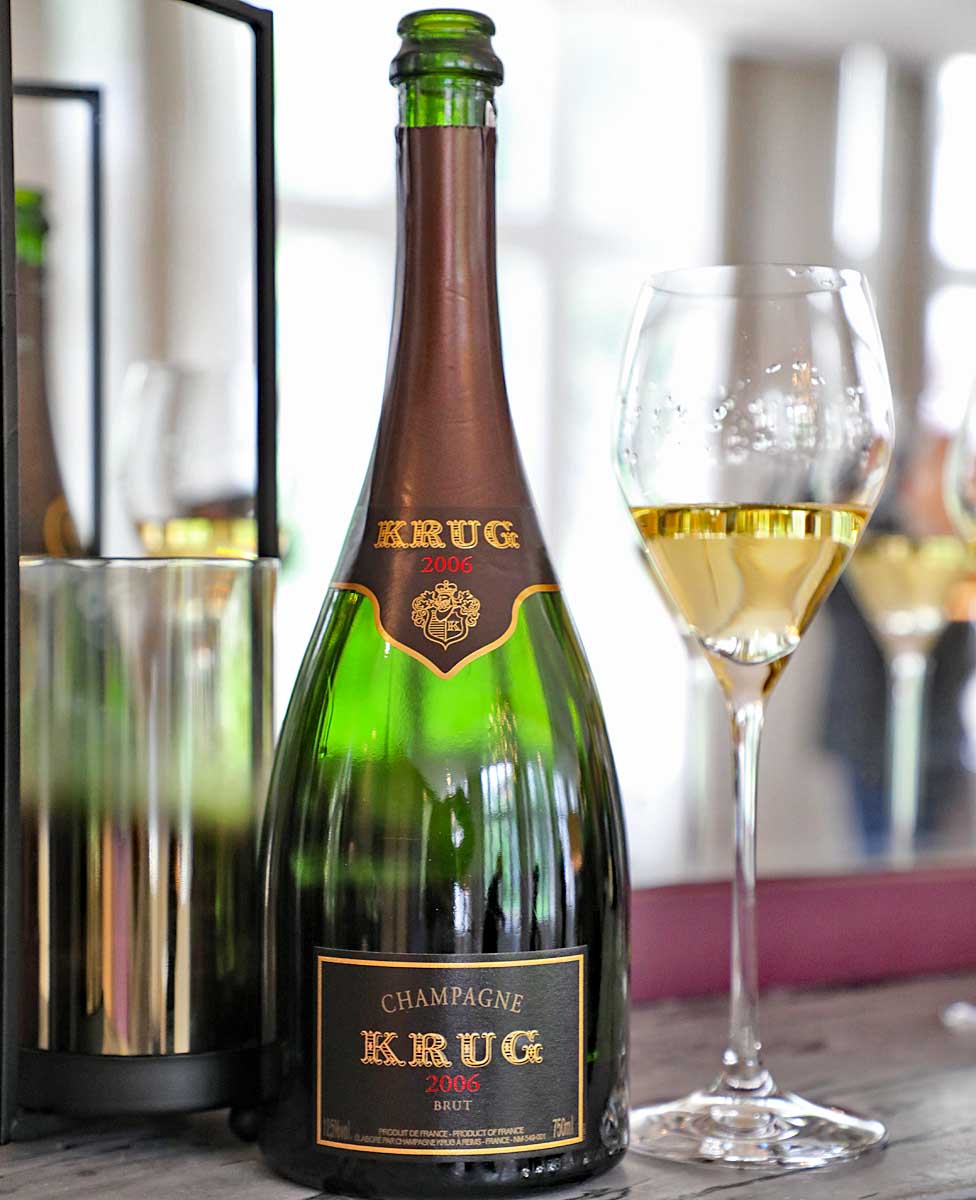
Krug Vintage 2006 - an outstanding Champagne.
Totally different level than Grande Cuvée, the taste is much more intensive, fruitier and more complex. It's interesting to know, that is was a very hot vintage (important in the champagne area), which is probably the reason for the outstanding taste. It makes sense to buy these bottles as an investment, but they are honestly too good not to be opened. Definitely a wine to recommend, drink and enjoy (with caviar and raw scallop carpaccio at its best).
During delicious finger food, which is served in Krugs corporate colors (fried purple eggplant chips) I am starting a conversation with a young lady, who is part of the wine making team. With immense dedication she explains to me, why Krug is not organically certified, however uses chemicals only, if the entire crop is in danger. She explains their more sustainable approach on all levels, rather than focusing on one certification. She is in charge for 83 growers and Krug made contracts, plot by plot. The growers press the plots seperatly, which makes Krugs grape buying truly unique. All the 250 plots are then vinified at Krug.
Its only one of many steps that make this champagne so memorable. I now see why Krug lovers are a thing.

